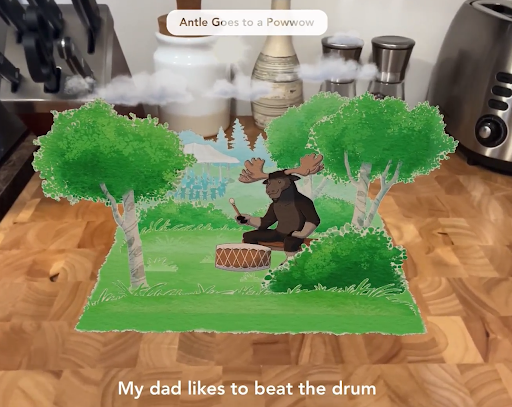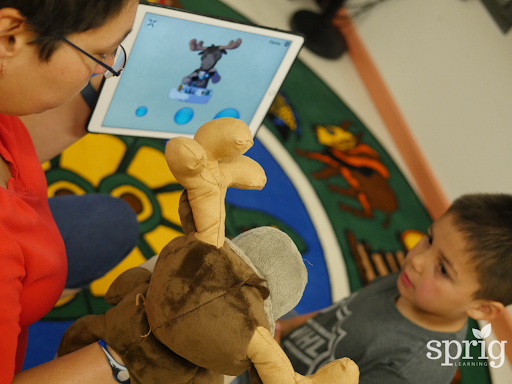In education, formative assessments are extremely popular. Schools that use formative assessment show gains in academic achievement for students. For previously underachieving students, the gains are more pronounced due to the impact of formative assessments.
Formative assessments happen regularly in classrooms where a student’s progress is evaluated on a daily or weekly basis. Educators are able to obtain information, offer feedback and adapt instruction accordingly.
Formal formative assessments use well-defined grade rubrics, while informal assessments use methods such as observations, notes, etc. We have covered formative assessment best practices in this post, with each practice varying in its range of formality.
Summative assessments cap either side of formative assessments in every school year. The student’s progress is measured at certain times of the year, to acquire an understanding of the sum total of what the student has learned since the last summative assessment.
Standardized assessments are less frequent than summative assessments. They usually happen just once per year or every few years, beginning in grade 3 in both Canada and the US.
Diagnostic tests or screeners are the rarest of the bunch. They are not required by all jurisdictions or school systems. But many do require a diagnostic test for entry to kindergarten or primary school. They are sometimes known as pre-assessments, as they offer information to educators about a student’s level of knowledge prior to instruction.
What Are Holistic Formative Assessments?
Compared to formative assessments, much less is known about holistic assessments.
Holistic Assessments Have the Following Characteristics
- Assess Learning that occurs in multiple locations. The ability to look beyond the learning that occurs in the four walls of the classroom, and additional looks to understand and assess the learning that occurs at home, outside and in the community.
- Include multiple perspectives. Going beyond an assessment of learning from the teacher’s perspective, but including parents, caregivers, librarians, Elders, and community members in the assessment process. Reaching out to understand the learning opportunities for every child, from multiple perspectives.
- Assessing Beyond cognition. Not only assessing the concepts and skills learned, but also looking to understand a students’ ‘access’ to learning, ‘participation’ in learning and ‘opportunities and supports’ for learning that always impact a student’s ability to succeed academically in the classroom.
Holistic Formative Assessments Are Multimodal
Holistic formative assessments retain all the previously mentioned attributes of holistic learning. In addition, both formative and summative assessments are incorporated in the holistic formative assessment framework. Such assessments can also be used as diagnostic tests for incoming kindergarten or grade 1 students.
Thus with holistic formative assessments, it’s more than just a single assessment. Rather, it’s a comprehensive system that focuses on a broader understanding of learning.
It casts a wide net in trying to understand the whole child. It accounts for multiple learning perspectives from both inside and outside the classroom.
Subsequently, holistic formative assessment supports the development of an effective, personalized learning strategy for all students. New holistic assessments often follow at the end of the learning period to reevaluate the growth and development of the child.
Formative assessments are interspersed between such holistic assessments to help educators make adjustments in real-time. This provides adequate checks and balances to ensure the progress of every child.
Thus, holistic formative assessments dig deep and span wide.
They dig deep for information that would not otherwise be available. Information such as other languages spoken by children at home and in the community, surveys from parents and caregivers on what opportunities for learning are available at home, and/or student perspectives on their learning strengths and challenges.
They span wide in that they do not consider simply one learning domain or examine only the current school year in isolation. Rather, if there are any missed learning opportunities from week-to-week, month-to-month, or even from the previous school year or home experiences, these are quickly and systematically addressed.
Other than the structural aspects of the holistic formative assessment, what are its underlying philosophical principles? The holistic view on education provides the answer.
The Holistic View on Education

The holistic approach to education holds the view that a student is a whole person with a mind, body, emotions and spirit.
In the context of early learning, it focuses on the development of the whole child, placing equal emphasis on cognitive, physical, emotional and spiritual development. The roots of this pedagogical concept are in Indigenous education, who first adopted this method of learning for children in their communities.
Holistic learning promotes balanced relationships between people, and between people and their environment. A safe and nurturing environment is provided where learning takes place.
The holistic view on education requires a complete understanding of a young student’s learning preferences, strengths and circumstances. It uses holistic assessments to acquire such an understanding.
Holistic assessments can also support the promotion and revitalization of local languages and cultures for students in the classrooms. They provide a comprehensive view of a child’s learning by gathering input from the child, teacher, parent and Elder about learning in the home, school, community and on the land.
Where Holistic Meets Formative

The connection between holistic and formative assessments happens when the former is done frequently and linked to instruction.
The individual results from holistic formative assessments are most effective when linked to personalized learning activities that can be done in the classroom, in the home, and in the community. This is the part where it ceases to be just a holistic formative assessment, and becomes a tool to support equity and inclusion in education.
When recommending activities for learning and assessment, the focus is as much on strengths and interests, as it is on any learning opportunities or deficits.
The link between summative and formative assessments are usually left to educators to figure out. However, holistic formative assessments ensure that the results are always tied to a personalized course of action. This allows continuous support for the student’s educational needs.
An example of how a holistic formative assessment can be administered, is how Sprig Language program integrates an on-screen off-screen approach. The holistic assessment of early literacy happens on screen with the student, uncovers new insights about the child’s motivations to learn. Such a wealth of information can be used to support more effective instruction in the classroom and support targeted and engaging learning at home.
The assessment and digital learning material can be accessed using a tablet, a phone, a PC or any other device. Physical classroom materials such as storybooks, language development cards and other resources accompany the assessment.
Some of the materials can be used in the holistic assessment itself, others can be used for activities that are recommended by the assessment. These activities are most effective when they double as formative assessments (e.g., quizzes or games).
The Benefits of Holistic Formative Assessments

The structural benefit of holistic formative assessments is tremendous. It ensures that there is a comprehensive, 360 degree understanding of a single student spanning multiple school years. This holistic understanding uncovers new insights about each learner, informing personalized instruction in ways that would not have been previously possible.
Here are some other benefits of adopting the holistic formative assessment framework.
Uncovers New Insights
Teachers will glean new insights from holistic formative assessments which would otherwise not be identified in traditional formative assessments. Information such as learning interests, learning opportunities outside of the classroom, and unique learning styles all emerge out of a holistic assessment and broader understanding of the student.
It allows educators to take a strength-based approach to instruction. It also allows them to build on the newly identified student strengths and interests to address the student’s needs and challenges, which would remain hidden without this holistic approach to assessment.
Useful in Curriculum Mapping
Holistic formative assessments can be tied to the learning outcomes of any local curriculum. Curriculum mapping is a big challenge for educators in North America. Oklahoma State University published a paper that identified the following four improvement areas in order to achieve successful curriculum mapping.
1) sufficient and adequate training for mapping
2) provision of adequate resources and assistance
3) constant communication about the initiative
4) monitoring the implementation process
All four areas can be addressed with the guidance of the holistic formative assessment framework. As it’s a whole system of assessment, it comes with the necessary professional development and resources to implement the assessments.
As the initiative is rolled out, the use of technology enables constant communication between educators and between educators and other relevant parties such as school administrators and parents. It enables personalized instruction for students grounded in a holistic understanding.
Lastly, there is the consistent recording of data, be it the completion of activities, or new data points from ongoing assessments. Especially in early learning, formative holistic assessments monitor the progress of students in their early grade classrooms. They improve the relevance of instruction to address the literacy and numeracy learning opportunities.
In fact, such assessments can be linked to state or provincial curriculum and standards for preschool and Pre-K-3. Sprig Learning is all too familiar with such a process, having done it for multiple provinces and states across North America.
Inclusive in Nature
Holistic formative assessments are inclusive. They are important for mixed ability classrooms. They allow students to progress at their own pace.
Learning can be accelerated for those students who grasp concepts and demonstrate skills faster than others. Learning can also be slowed down for those students who have to first close a certain gap in understanding, that will expedite their learning in the future.
Mitigates Bias
Holistic formative assessments reduce the likelihood of implicit bias by being more culturally responsive, educationally comprehensive, and having a system in place with multiple opportunities for assessments. It’s a topic we have covered extensively in this article on dealing with implicit bias.
In order to properly assess a student, it’s important to understand their learning needs, interests and familiarity or anxiety with the assessment process itself. Otherwise, they are at risk of being inaccurately assessed without having a comprehensive understanding in place.
It’s the holistic formative assessments that allow educators to access this information, where they themselves have a better understanding of the student and their learning environment, and can tailor support and instruction to the learning needs and strengths of the student. An equitable result for all young students is the outcome.
The Holistic Booster to Formative Assessments

There are so many benefits to holistic assessments and holistic learning. Each of these 15 holistic learning characteristics positively influences the learning experience for early learners.
It’s when holistic assessments are combined with formative assessments, the true power of assessments is unleashed. Research shows that holistic assessments improve student outcomes and result in a more equitable learning experience.
The holistic development of students is a much-desired component of high-quality early childhood education, according to the Organization for Economic Co-operation and Development.
Most teachers are already using formative assessments in either a formal or informal capacity.
If these assessments are driven by holistic approaches and placed in a structured setting, their full potential is realized. They are more acutely informed by a systematic and extensive analysis of student activity and learning perspectives.
Contact us to explore how holistic assessments can be added to your assessment strategy.










